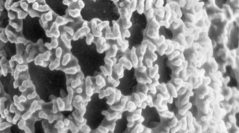

 Comptes Rendus Palevol
6 (6-7) - Pages 423-430
Comptes Rendus Palevol
6 (6-7) - Pages 423-430One of the commonly quoted weaknesses of pollen analysis is its poor taxonomic resolution, which can be achieved with the Light Microscope (LM). This prevents detailed palaeoecological interpretations from being made. Although the Scanning Electron Microscope (SEM) has been widely available for almost 40 years, it is rarely used in routine palaeopalynological research. The usual reason given is that single-grain techniques are too time-consuming. However, this need not be the case. By combining LM and SEM, fossil pollen grains can be identified more accurately. Moreover, it is possible to distinguish between similar, but botanically distinct, taxa. In this way, palaeopalynology can supply phylogeneticists and palaeoclimatologists with a plethora of useful data.
LM, SEM, micromorphology, ornamentation, single-grain technique